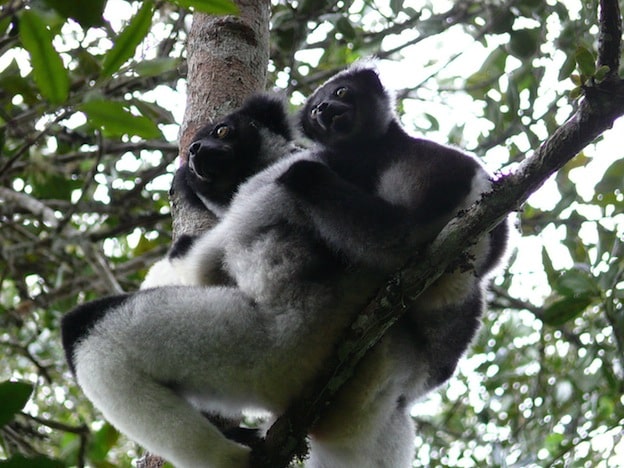Indri Lemur – Indri indri
Introduction
The Indri Lemur is also called the Babakoto in many regions. This is one of the largest Lemurs found in the world. They seem to have many behaviors that are humanistic. They have characteristics that are different from many other species of Lemurs. As this time their survival is severely threatened.
Description
This particular Lemur is almost 2 ½ feet in length and can also weigh up to 21 pounds but are typically found around 13 -15. They are able to leap vertically and to cling in place due to strong hind legs and sharp claws. They have one of the shortest tails of all Lemur species.
They have very round ears, a button nose, and small eyes. It is no wonder that they are often compared to a teddy bear! They have a considerable range of differences when it comes to their color. The region where they live affects their coloring so that they can blend in. They may be completely black, brownish, and have areas of red or white on them.
Distribution
Along many scattered areas of the Madagascar Islands, you will find the Indri Lemur. They tend to stay close to the Mangoro River but they are not no longer living along the Masoala Peninsula. There are a few national parks in the area though where they have been getting well needed protection. The are very limited in mobility due to their limited habitat. As a result where you will find the Indri Lemurs you will find large numbers of them.
Behavior
There are very distinctive sounds and songs that are known to come from this species of Lemurs. They can last for up to 3 minutes at a time. There are 3 phase patterns in them too that researchers have been able to identify. This starts out with a roar, moves into a basic sounding vocal, and then finishes with a high pitched sound. Adult couples usually take part in these songs as a unit.

Diet /Feeding
Leaves and twigs are a big part of the diet from the Indri Lemur. They are able to get most of the vegetation they need right from the trees. They will consume nectar, nuts, and fruit though if they come into contact with them. They are often on the ground though so they do have access to items of food that other tree living Lemurs don’t have.
Reproduction
They make life long mating partners in their small families. They will only seek a new partner upon the death of the one they have been with. They often form families that have many generations living in them.
They don’t reach maturity until about 7 years of age for the females and 9 years for the males. The females will only have offspring every 2 or 3 years. This is very different from all other Lemurs. The young are born after 120-150 days of gestation and usually arrive in May or June. The males do help with the care of the young. The bonds are very deep within these Lemur families. There are very few conflicts that result in physical fighting.
Conservation
There are quite a few efforts in place right now to help improve the numbers of the Indri Lemurs. The fact that they mature so later in life and that they don’t reproduce annually is a huge barrier. There are some breeding programs in captivity but even with them the number of these Lemurs seems to continue to drop.
There are many cultures out there that hold them to be a symbol of good luck. Yet some of the villagers have been known to lead guided hunts. They give up the location of these Lemurs in order to get supplies or money to provide for their families basic needs.







